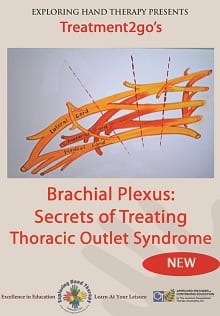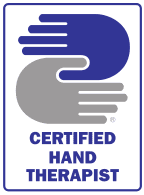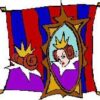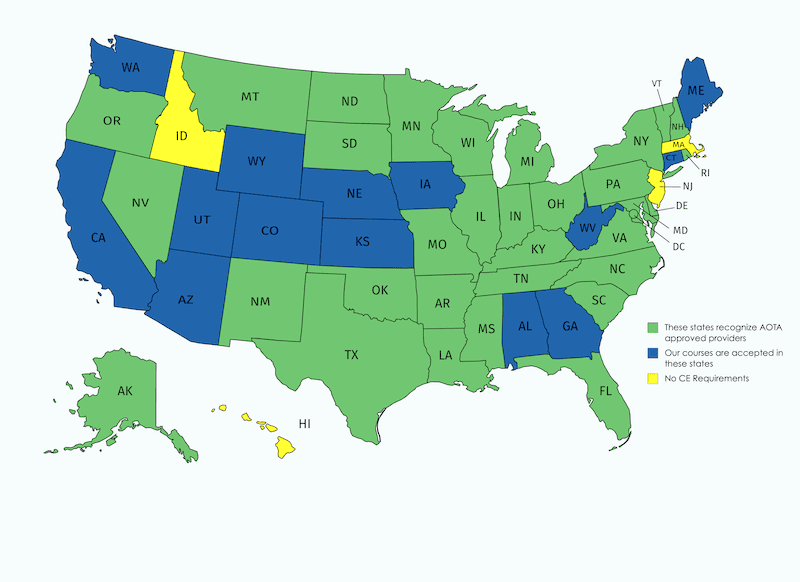
Brachial Plexus: Secrets of Treating TOS
| CONTACT HOURS: | 4 Hours |
| CEU: | 0.4 |
| AOTA: |
Domain of OT, OTP, Check Accreditation
|
| NBCOT®: | 5 PDUs |
| STATE: |
AL 358379 4hrs V 4hrs |
Brachial Plexus: Secrets to Treating Thoracic Outlet Syndrome (TOS) is an often under-diagnosed, over-diagnosed or misdiagnosed nerve compression that often creates difficulties in management. The purpose of this course is to provide the reader with clarity in understanding the structures involved, the use of provocative testing alone with a systemized plan to treat and improve the identifiable dysfunctions in the upper quadrant.
Buy Now
$230.00
Description
*University & multi-center Licensure available upon request; all courses single user only
*Watch on your idevices, smart phones, tablets and MORE
Domain of OT, Occupational Therapy Process,
Brachial Plexus: Secrets to Treating Thoracic Outlet Syndrome (TOS) is an often under-diagnosed, over-diagnosed or misdiagnosed nerve compression that often creates difficulties in management. The purpose of this course is to provide the reader with clarity in understanding the structures involved, the use of provocative testing alone with a systemized plan to treat and improve the identifiable dysfunctions in the upper quadrant. You will understand Brachial Plexus TOS when you complete this course.
Must have for everyone!. Manual includes worksheets, labeling/matching, & identifying coursework of brachial plexus, dermatomes, anatomy and more. EXCELLENT study material for exam for the CHT! Instructional Methods include PowerPoint presentation, lecture, and videos to enhance understanding . Upon successful completion of the examination (80%) your certificate will be sent via email. Mixed level course.
Objectives
-
- Identify 3 main compression sites for TOS
- Distinguish between upper brachial plexus and lower brachial plexus pathologies
- Recognize venous TOS symptoms
- Identify proper tests for lower brachial plexus pathologies
- Identify anatomical structures of the brachial plexus
- Identify symptoms of lower brachial plexus pathologies
- Adjunctive DVDs available for some courses for an additional fee. Call 727-560-5552 for details
Outline & Content
-
- Manual complete with brachial plexus worksheets for you to label with answer key in manual
- Worksheets of dermatomes with answer key in manual
- Label worksheet of the structures associated with lower brachial plexus TOS
- Anatomical Introduction
- Therapy Examination and Evaluation
- Neurogenic pain and differential diagnosis of lower brachial plexus: TOS
- Greater Imagery Program detailed look, demonstrations, and implementation
- Extensive Home Treatment Program
- Summary and Tips from the Expert (instructor)
4 reviews for Brachial Plexus: Secrets of Treating TOS
- Participants have one year to access the CEU course and exam to obtain CEUs.
- NBCOT® is a registered trademark of the National Board for Certification in Occupational Therapy, Inc. and does not promote or endorse our specific courses, services or training.

Treatment2go is an AOTA Approved Provider of professional development. PD approval ID #3397. This distance learning-independent activity is offered at 0.4 CEU’s, intermediate, foundational Knowledge. The assignment of AOTA CEU Does not imply endorsement of specific Course content, products, or clinical Procedures by AOTA.








Maggie Moraw OTR/L –
Great selection and very knowledgeable educators.
Anonymous –
Very good course. Very good presentation.
Peggy Langley –
Amazing course! I can’t say enough good things about it. Susan did a great job explaining the areas of TOS I was familiar in treating, but I learned many new facets such as the mirroring, greater motor imagery that can be used on this patient population. Thanks for a comprehensive course that nailed it!
Anonymous –
I haven’t completed the course yet, however the instructor is very knowledgeable and I like the way she repeats key information numerous times. This helped me recall information as the the course moved along.